Why Western Culture is Beginning to Embrace Anime
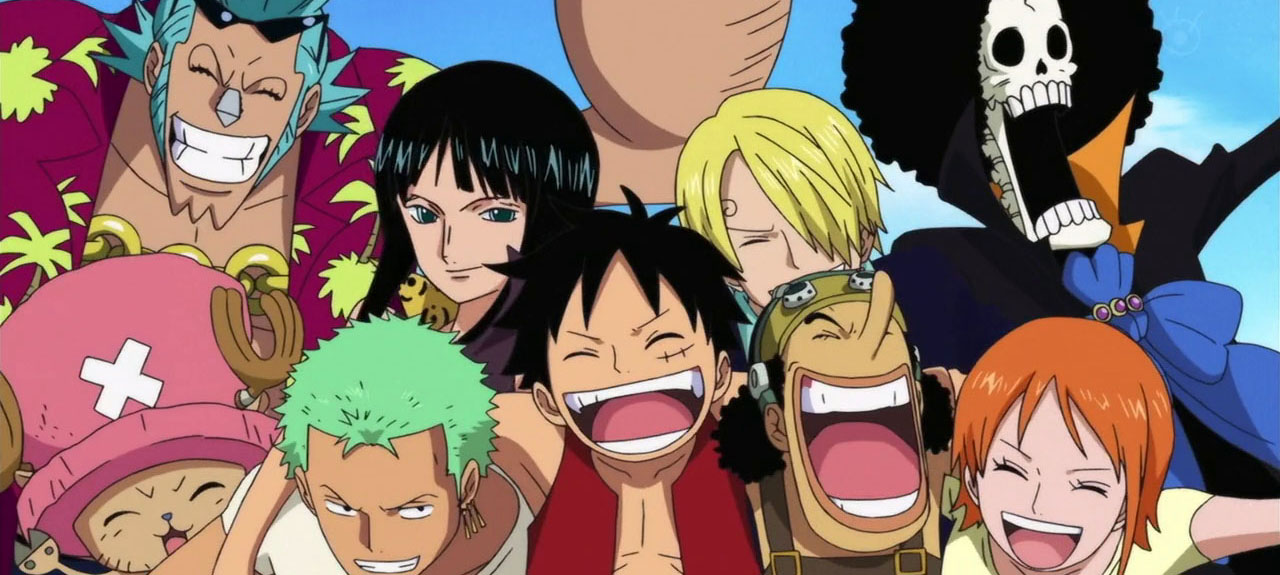
It is the conversation every anime fan dreads. You watch a series like One Piece or Bubblegum Crisis: Tokyo 2040 and you’re convinced a friend or family member would love it if they just gave it a chance. You tell them the premise. They’re intrigued. Then you explain it’s an anime. Their eyes glaze over and their face sinks into a deadpan glare as you’ve, yet again, tried to trap them into watching another one of your nerdy Japanese kids shows (or worse they have visions of busty young women being held captive by tentacled monsters).
This response is particularly baffling considering that the draw cards on both the big and small screens these days are intellectual properties that are (or at least were) aimed at children. People refuse to see Yoshiaki Kawajiri’s Ninja Scroll or Isao Takahata’s heartbreaking Grave of the Fireflies because anime is for kids, but they will gladly line up for hours to be the first to watch the latest Star Wars, Harry Potter or Marvel movies.
But fortunately there is a whiff of change in the air. A growing number of people are realising that anime is not a genre like western animation, but rather an artistic format to tell an array of different stories. Much like video games are slowly breaking down the stigma of being a children’s medium, anime has opened up over the last two decades. The 80s and 90s saw moderate success bringing anime to the west, but it has never been more popular than it has today (especially with adults). So, why are we now seeing this anime renaissance?
Crunchyroll: A Streaming Godsend
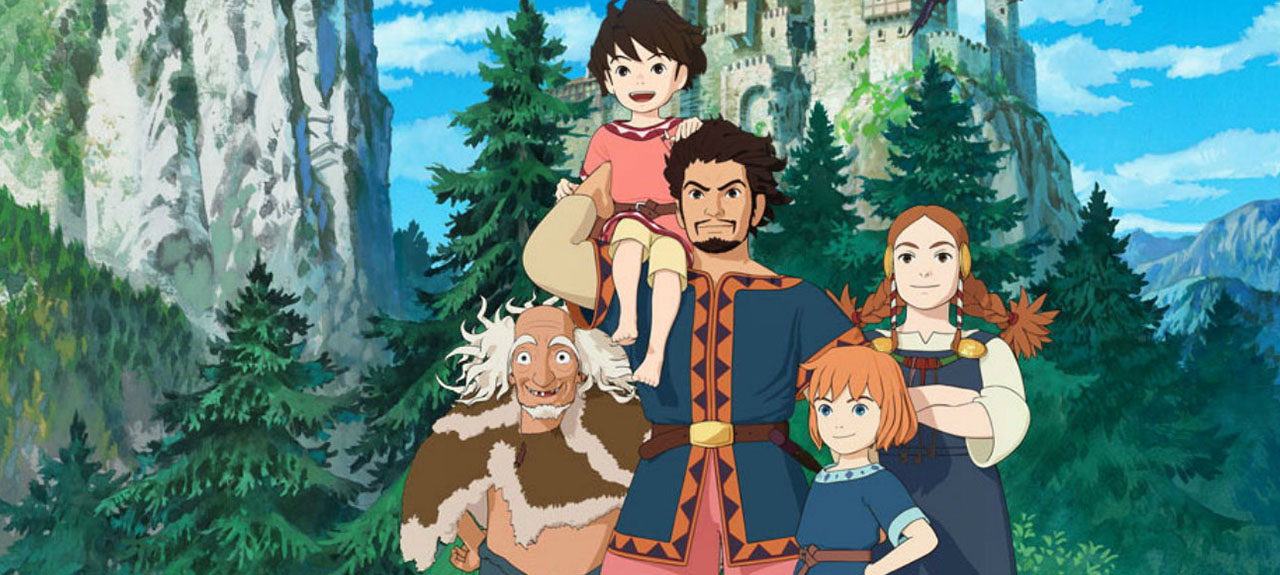
Going back a decade or so, the key killer of any potential anime fan’s enthusiasm was access. Anime was considered a very niche market (most never officially made it outside of Japan and could only be found on bootleg versions with fan subtitles). This meant purchasing anime quickly burnt a hole in your wallet. Even today, to buy a volume of One Piece, which contains only 15 episodes, can cost you around 50 bucks; and for a series currently sitting just shy of 800 episodes… It all adds up.
But the joys of the digital age have brought us affordable anime in the form of Crunchyroll: a streaming service founded in 2006; since then, it has amassed over 20 million subscribers and shows no sign of slowing down. The streaming service is available for free, which means people who cannot afford streaming services can easily access the content; however to watch in HD (and ad free) there is a $6.95 monthly subscription fee. If you choose an annual plan, it is only $59.95.
Let’s compare the affordability of today’s technologies to that of the early 2000s. To do this, we are going to use One Piece: The most popular show on Crunchyroll, and a popular title for both eras. At the time of writing this article, One Piece had just aired its 792nd episode. Every episode runs for 23 minutes, which means that to get through the entire series so far, you would need to set aside 18,285 minutes (about 304 hours). It would take just over 12 ½ days to watch the entire series in a marathon. Assuming that you will also need to eat, sleep, go to school and/or work, let’s say you have enough time to watch two episodes a day. It would take 13 months to be up to the current episode. Now, disregarding the new content that came out over that thirteen month period, watching up to the current episode in full HD would cost you a grand total of $90.35. If you compare purchasing the 15 episode DVDs, which retail for $46.98, then to watch the same amount of episodes you would need to purchase 52 volumes (some of which aren’t available yet), which would come to a grand total of $2,442.95 (Interesting fact: You would need to have a paid Crunchyroll subscription for forty-one years to spend the same amount of money as buying One Piece on DVD).
This means that more people can afford anime, but what does it mean for actual consumption? Well, Crunchyroll’s twenty million subscribers watch 1.5 billion minutes a month. This gives them an average of 75 hours a month per subscriber, divided into a daily average of 2 ½ hours of anime a day. The average Netflix user watches approximately 1 ½ hours of television a day. Since Netflix has 98 million subscribers around the world, it is safe to assume that most of these twenty million crunchyrollers have access to Netflix, but are choosing to spend an hour a day more on average watching anime than the predominantly western entertainment on the bigger streaming services.
In the end, Crunchyroll allows you to stream new and beloved anime in full HD for a few dollars a month, which makes it more accessible than it has ever been, and now opens the door for people to dip their toe into the anime pool without mortgaging their house to do so.
The Weird and Wonderful Freedom that Anime Brings
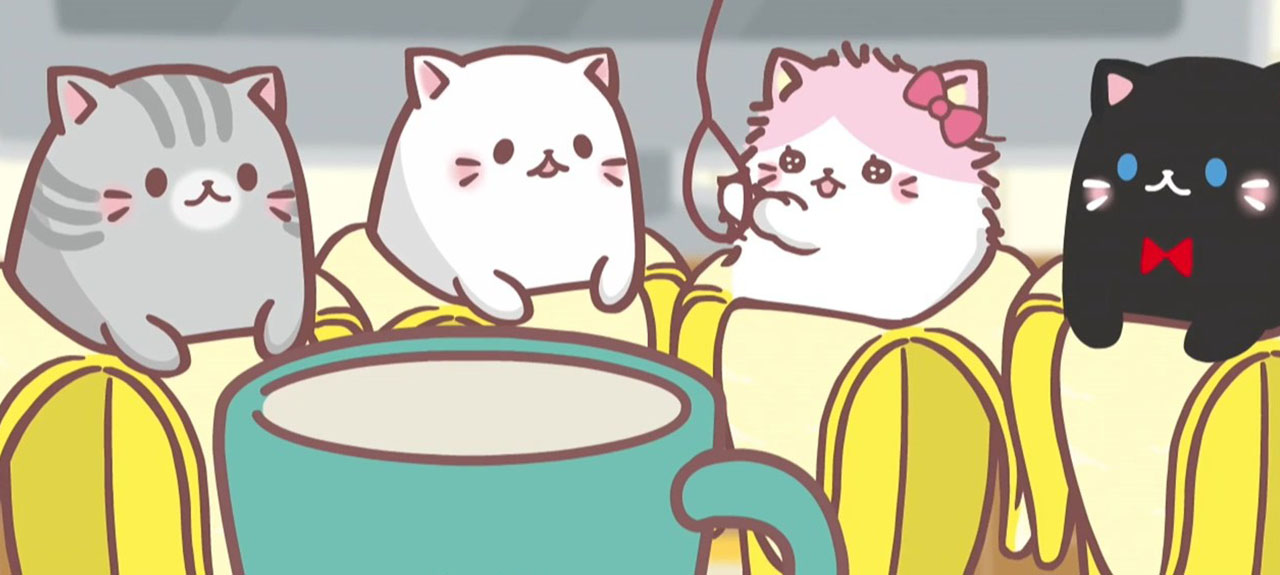
When someone decides to try anime, it can be a little daunting. It’s nothing like western animation, or even western entertainment in general. It comes from a completely different culture.
Maneuvering through the murky quagmire of western entertainment can also be tiresome. All the faceless comic heroes start to blend together and it becomes hard to remember where one YA dystopian series ends and the next begins. You feel like you are going around in circles, stumbling across the same wash, rinse and repeat formula. It might be lazy, but it is guaranteed to make money, right?
Perhaps not.
In the wake of King Arthur: Legend of the Sword opening with an abysmal 15 million on a 175 million dollar budget, western audiences are telling the studios that they have had enough of sequels, remakes, reboots and soulless cash-ins like Baywatch (2017) and Ghostbusters (2016).
This doesn’t mean the Japanese are a society of pious artist who aren’t interested in money. They live in a world of capitalism just like ours; but there is a greater level of respect for the creative process. Despite having written more than 80 volumes of the One Piece manga, Echiiro Oda has even been quoted as saying he would ‘die for One Piece‘. This isane level of dedication is manifested throughout his series. It’s evident that Oda loves the world and characters that he creates; so much so that it seems unlikely he would sign off on a character or story arc that could hurt his intellectual property just because it’s commerically appealing. He is given the freedom to flex his creative muscles. Of course, the irony of all this is that his unique creativity is what makes his work so commercially appealing.
The Japanese production philosophy will (generally) see a story through and let it die with dignity. It might run for 13 episodes like Bananya, or 792 and counting like One Piece, but they will play a scenario through until they think the story is finished; then they let it go. They don’t comprimise the artistic integrity of previous work by hashing out a show well past its expiry date. Japanese showrunners usually stick with their shows until the end. Cowboy Bebop was written and directed by Keiko Nobumoto and Shinichirō Watanabe respectively. They were involved in the production of all 26 episodes. Compare this to an A-list showrunner like J. J. Abrhams. He created ALIAS and yet he is only credited with writing 13 of its 105 episodes; while LOST, arguably his biggest TV success, he only wrote 3 teleplays. Abrhams also left both series well before they reached their final seasons.
Bananya is a perfect example of anime production. The preschool children’s show about the weird and wonderful world of cats that live inside bananas contains only 13 episodes, and though it found huge success (namely amongst westerners in their twenties and thirties), there are so far no plans to make another season. The writers may have only ever intended for one season, and so it removed the fear of being cancelled. They could make the weird and wonderful world rattling around in their head; a level of creative control that Western screenwriters would kill for.
Stories without Western Sensibilities
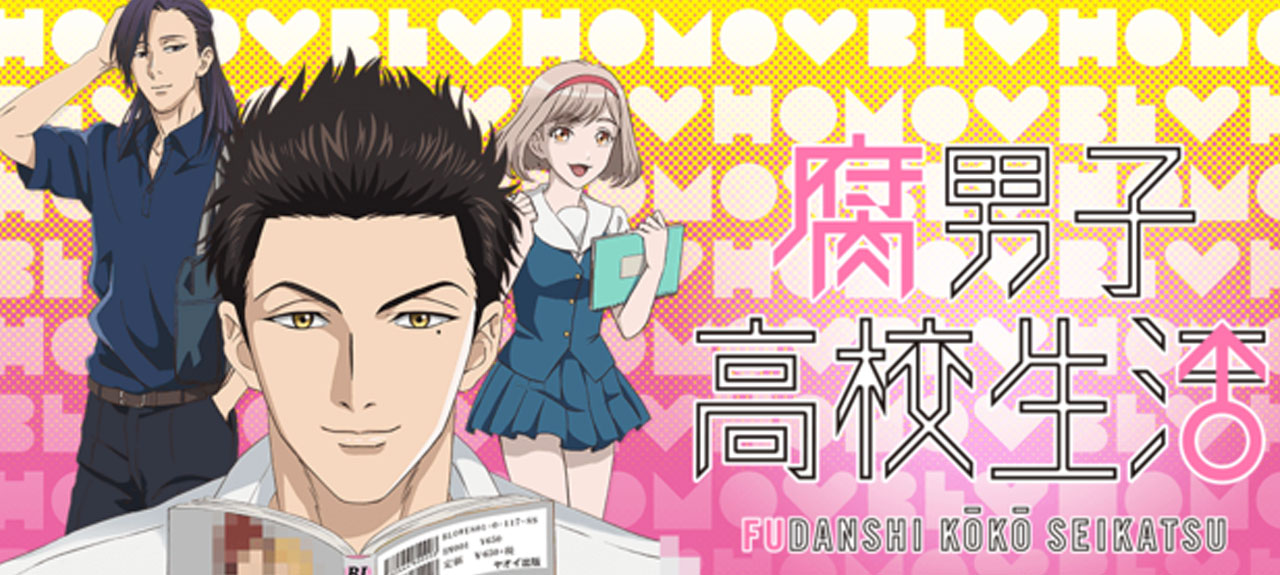
Anime’s writing freedom doesn’t just extend to commercial risks. It should come as no surprise that Japanese culture is rooted in tradition. There is still a very high importance put on etiquette and respect. It is important to Japanese people that they take in their elders when they can no longer look after themselves; they have pride in their clean cities unlittered by garbage; and you must always slurp your soup to signal your enjoyment.
Western culture, which has immersed itself in the world of social media, has replaced etiquette with ideology. It has reverted to a tribal state, setting up camps in different corners of the internet, preparing to battle people with differing opinions. Last year, we saw a furore in the media about how anybody who didn’t like Ghostbusters (2016) hated women; in recent weeks, Cassie Jaye was in Australia promoting her film The Red Pill, which explores the issues of men’s rights activists. People tried to ban her film, and the media verbally attacked her on national television, simply because they didn’t want to hear what she was saying (it was also exposed that none of these ‘jouralists’ actually bothered to watch the film); and just this week christian groups tried to boycott McDonald’s for having rainbow ‘pride fries’ to their San Francisco stores.
Regardless of political faction, western society has succumb to the dark side of social media and has destroyed all political discourse. We have established a bullying culture where people are coerced into a hive mind mentality. All sides seem to delight in ‘doxing’ people and ruining their lives for not sharing the same sentiments.
It is this ruling by fear that has stifled creativity within Hollywood. Stick to the safer tropes because it is not likely to offend someone. A perfect example of this is American sitcoms. Since the introduction of The Simpsons in the late 80s, there has been a steady stream of sitcoms consisting of an idiotic husband, three children (typically one intelligent female, one popular female and one moronic male) and a wife that is the glue that holds it all together. You can find this tropes, or a slight variants, in shows like Modern Family, Everybody Loves Raymond, Fresh off the Boat, Family Guy and 8 Simple Rules just to name a few. While there is nothing inherently wrong with this kind of setup (and The Simpsons is one of the greatest shows of all time) when it is repeated ad nauseum for the sake of playing it safe, you lose any kind of creativity.
Compare this to The Highschool Life of a Fudanshi, and you notice a very different style of storytelling. For those of you who don’t know, a fudanshi is a male who enjoys reading homoerotic manga. The series is a collection of vingettes that follow the awkward adventures of Ryou Sakaguchi: the titular highschool fudanshi. He is never really treated poorly by society; people are generally more shocked or curious. They are constantly questioning his sexuality and Ryou, despite his fascination, always responds with disgust at the idea of himself engaging in homosexual relationships.
Some westerners have criticized this character reaction as homophobic, but in its defence, people coming to terms with their sexuality can legitimately have this reaction. In addition to this, showing the life of a fudanshi is adding some new perspective to a very small minority within Japanese culture and giving a voice to the underdog, which, after all, is the core value of diversity.
In this respect, Highschool Fudanshi embodies the essence of Eastern philosophy. The series explores the key concepts of being a fudanshi: how they live, and how others around them react, without piling on thinly veiled political lectures. You are given enough information and breathing room to formulate your own opinions. Many people in western audiences crave original stories from voiceless people or groups that have something to say. Unburdened by political correctness or conservative censorship, anime is able to tell these unheard stories with fresh perspectives, rather than stagnating in a string of remakes and reboots.
Live Action Remakes
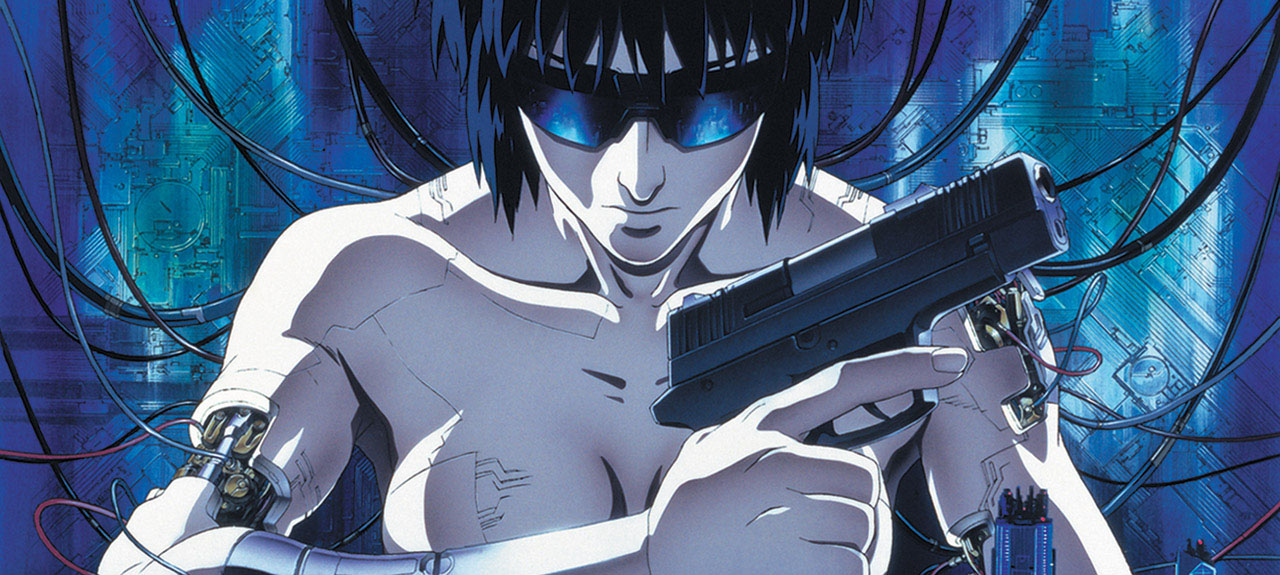
On the subject of remakes, let’s spend a moment on Scarlett Johansson’s Ghost in the Shell. While Western cultures were focused on the ‘white washing’ of casting Johansson’s character, something argueably more important was being removed: the Japanese culture itself. The film’s director, Rupert Sanders, even stated that the anime was “too philosophical and too introspective”, and decided to turn this thought-provoking film into a one note action movie; as Hollywood has already done with so much of its own medium. Hollywood films like Blade Runner explored these themes in an introspective and philosophical way, and inspired anime like Ghost in the Shell; but modern western films will dumb down our entertainment, for fear they might not reach the widest market possible. Anime is unafraid to be philosophical; to not reach every single person. Of course, the irony is that in trying to please everybody, you don’t end up impressing no one. While some people might even enjoy Johansson’s remake, nobody is going to declare it as their favourite movie of all time.
But one thing that comes from Hollywood trying their terrible hand at anime adaptations is that it gets the intellectual property back in the Zeitgeist, under the noses of people who have never heard of it before. People who don’t know about Ghost in the Shell might enjoy the remake and find people discussing the original online; so they give it a look. In addition to this, the original anime was added to many major streaming service in the advent of the remake, and now people are tuning in to see what the film is about. Be honest: Have you never read an out of print book or watched an obsure film because you were excited about a Hollywood adaptation?
It can also work in the reverse. The Matrix was heavily inspired by anime, and because of this, it even had its own collection of cannonical shorts by famous anime directors (Ghost in the Shell‘s included). The aptly named Animatrix was used by many fans of the popular film as a gateway into the world of anime, which was escpecially helpful considering these high profile directors had worked on the likes of Laputa: Castle in the Sky, Cowboy Bebop, Kiki’s Delivery Service and Ninja Scroll. Films like Hugh Jackman’s Van Helsing and the Highlander also tried to adapt their properties into anime with varying levels of success; but regardless of the outcome, when films intended for children above the age of ten start to produce canonical animated adventures, it begins to break down the stigma around anime and makes it more accesible for a grown adult to fall in love with an animation without having to justify it with nostalgia.
The Mixed Blessings of Pokémon, DragonballZ and Sailor Moon
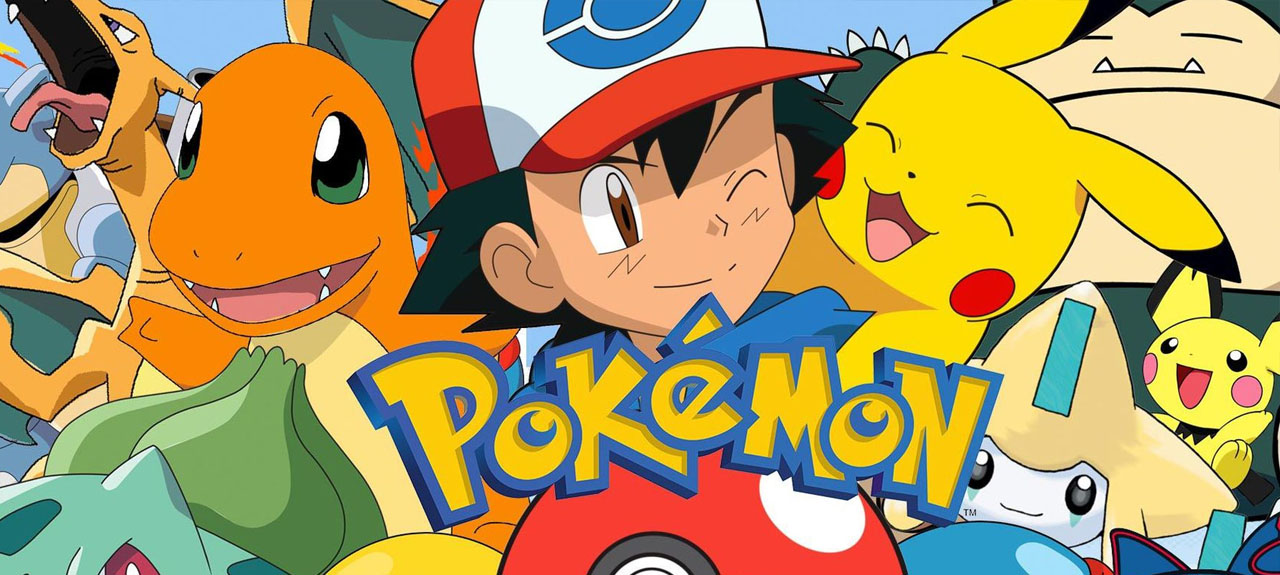 The highest concentration of anime fans are people who were kids during the anime boom of the 90s. The 90s saw an explosion of anime amongst children. Shows like Pokémon, DragonballZ and Sailor Moon were staples of morning television. These anime children of the 90s are now nearing their thirties, and as our culture and media have become obsessed with marketing childhood nostalgia, many of them are returning to anime for nostalgia’s sake.
The highest concentration of anime fans are people who were kids during the anime boom of the 90s. The 90s saw an explosion of anime amongst children. Shows like Pokémon, DragonballZ and Sailor Moon were staples of morning television. These anime children of the 90s are now nearing their thirties, and as our culture and media have become obsessed with marketing childhood nostalgia, many of them are returning to anime for nostalgia’s sake.
This a double edged sword.
The exposure anime recieved in the 90s was a critical to its success today, but it is also what holds back the artform. When Pokémon becomes synonymous with anime, it reinforces the western notion that animation is a children’s medium. Like many children’s television programs, Pokémon‘s key goal is marketing and merchandise (I did warn you the Japanese can be commercial too). It is produced on a showstring budget and the creators and viewers are more concerned with the merchandise than the story and content itself. Only last year, people all over the world were endangering their lives and dessecrating graves to collect the digital creatures in Pokémon Go! Nobody cared about the characters, the world or the artistry. This only fuelled the notion that anime was solely about commericalism and marketing to impressionable children.
It is important to think of anime as a artistic style, like film or novels; it is just a different way of telling a story. While some films can be targeted at children and be more about the marketing, others may be targeted at adults and may contain rich and complex themes. The same goes for anime; and while it’s important that anime was given that exposure during the 90s, younger people within western culture are open to the idea that anime is so much more than Pikkachu and Pokéballs. You wouldn’t read Fifty Shades of Grey and assume that all books are poorly written Twilight fan fiction, would you?
Oscars, Spirited Away and the Rise of Studio Ghibli
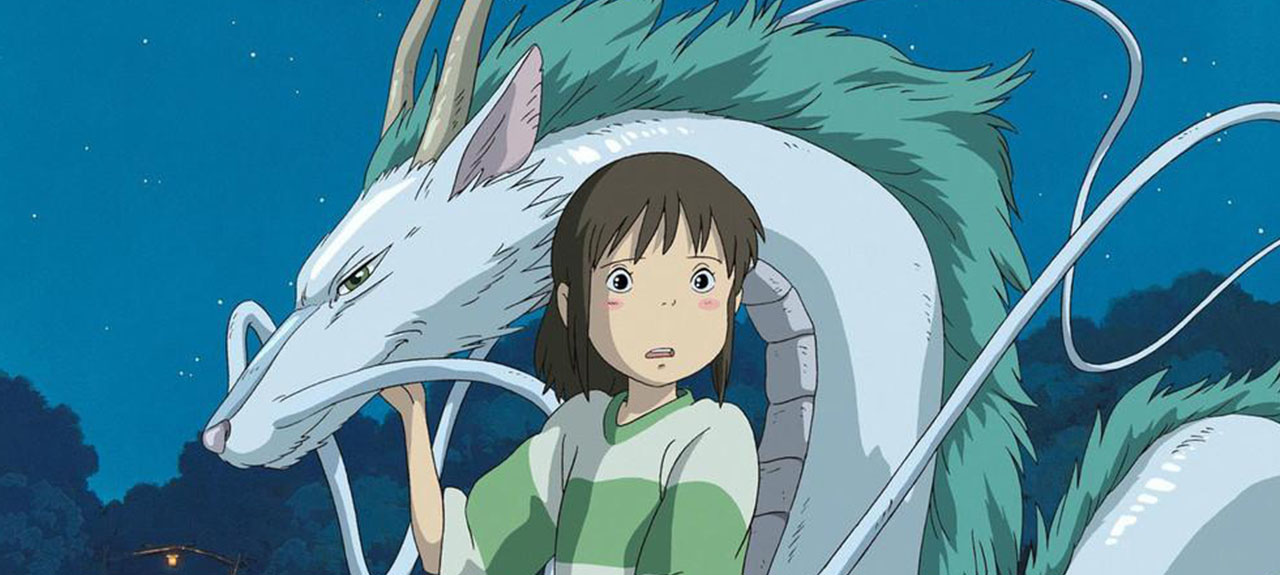
We cannot finish without mentioning the anime titan that is Studio Ghibli. Studio Ghibli was founded by Hayao Miyazaki and Isao Takahata in 1985. They released their first film, Laputa: Castle in the Sky (Nausicaä of the Valley of the Wind was actually created prior to the studio’s formation), and ever since they have been growing their fan base. While the anime boom of the 90s was great for the medium, things really blew up in the early 2000s when Studio Ghibli received the Oscar for Best Animated feature for the Miyazaki masterpiece: Spirited Away. The first anime to win an Oscar, Spirited Away was a game changer. It broke down the idea that anime is all cheaply produced garbage made to sell toys. There was serious artistry involved; and regardless of the intended audience, when a film wins an Oscar, western audiences and particularly those in Hollywood take note. Spirited Away spread through the film world like wildfire, filtering down into cinemas everywhere in what was quite possibly one of the widest anime releases the world has ever seen (although this may have been surpassed by Makoto Shinkai’s Your Name, which has gatehred quite a bit of buzz over the last six months).
So don’t lose hope all you anime fans. Keep trying to get those friends and family members into anime. They might not like the first or second thing you throw at them, but there is something for everybody in this broad, diverse medium; and if you are teetering on the fence about anime, please try it. Just remember anime isn’t a genre, but an art form in its own right.
What do you think? Leave a comment.




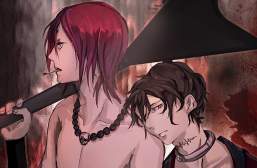


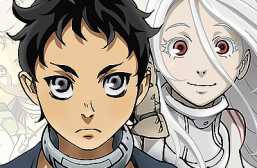
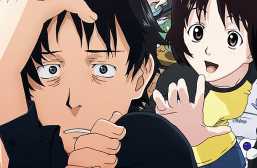
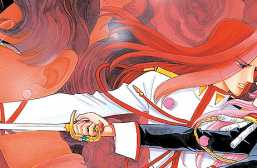
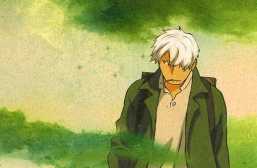
I would argue that anime was far more mainstream during the late 1990s and early 2000s when many shows like Pokemon, Card Captor Sakura and Yu-Gi-Oh were featured prominently on many children’s cartoon networks.
Anime might have had a minor bump with the release of Attack on Titan a few years ago, but I’ve noticed that many of my friends have given up on anime as they’ve grown older – a lot of anime is still extremely juvenile and most people are looking to watch shows with deeper thematic elements that are more relevant to adult lives.
I agree that juvenile anime is often what is pushed towards western audiences from a marketing perspective (probably due to the popularity of those 90s shows), but there is also a subculture of people who are seeking out those lesser known mature anime from Japan.
There are a lot more people that i personally know that watch at least some anime, to a shocking extent. They may not watch Rokka or Garo, but a lot of them have seen stuff like HunterXHunter, One Piece, Attack on Titan, or even Gargantia.
The stigma really is fading away, and people are now allowed to enjoy anime without being ironic or ashamed.
Definitely with the release of Attack on Titan anime has become a lot more popular.
Attack on Titan is definitely one of the most popular anime that is certainly not intended for children.
One thing I wonder if it will become more of an issue is the different tastes of foreign audiences clashing with the legal & cultural restrictions, for lack of a better phrasing, in Japan.
You’ve piqued my interest. I feel like there’s an article in that. You should write it.
I have become interested in anime since joining this forum. So many different types, there is something for everyone.
Anime is a very diverse medium with so many stories to tell.
True that!
The main problem with this article is that it says “western” when it means “American”. It’s painfully clear the author has no clue about eestern animation beyond Anerican childish superheroes and apparently never watched a western movie not made in holywood. As if the sheet volume of American production made it the only worth noticing, or even the only one that existed.
In other words, it just a pile of a supremacist crap.
Moreover, it falls into the trap of doing the exact thing it criticizes: oversimplification and generalization arguments (both “for” and ‘”against”) and poorly veiled shaming of “them” who don’t like or watch anime, in contrast to “us” who do. Forcing the opionion with a mace in the American (no, not western) way rather than givinh the space to breathe and form own opinions.
The article is referencing a lot of American (specifically Hollywood) entertainment, but it was not steeped in some anti-American sentiment. The majority of my entertainment (as someone who lives outside the US) is American.
These examples were chosen because they are the most popular/frequently watched amongst western audiences. Hollywood entertainment reigns supreme in the western market. I also chose the most popular examples of anime to a western audience, which includes a number of juvenile animations, and a number with dark adult themes (like Ghost in the Shell and Grave of the Fireflies).
There are many examples of western animation that tackle mature subject matter, like the animated versions of Richard Adams’ classic novels Watership Down and The Plague Dogs (in the 70s and 80s). These are terrific animated films not intended for children, but compared to their live action counterparts, they never garnered the same level of acclaim upon their release. If these films were released today, the outcome might be different in many ways. Like many cult-following subcultures, the anime trend has sparked the Eastern notion that animation can be just as good as live action, which is a belief slowly starting to change in western culture, but we haven’t entirely embraced the notion of animations being enjoyed, or even intended, for an older audience (Spirited Away is the highest grossing film of all time in Japan, followed closely by Titanic. Animation doesn’t come with the same stigma as in western culture; though fortunately this is changing).
Obviously things are not as simple as us and them. Some anime are soulless cash-ins, and there are some brilliant works of fiction that come from Hollywood, foreign and independent producers (many of which have inspired anime), but the article was focusing on the cultural differences on both sides that have built a bridge between Eastern and Western animation, both helping to push animation as an style not a genre.
Western animation suffers from cultural restrictions. Because of what is considered appropriate themes, appropriate level of graphicness and appropriate level of sexual content for younger audiences, most series will be sanitized for 5 years old even if the target audience is in their teens. There’s too much of an emphasis on what adults think should be appropriate/appealing to younger audiences than what actually is. And the only other kind of series being made are adult sitcoms. This is stagnant and a definite problem.
In Japan you have 50 or so series each season ranging from all types of genres: Magical girls, slice of life, comedy, fanservice, action, sci-fi, mecha, shonen, family-oriented, drama, romance, cyber punk, fantasy… There’s just no way western animation compares or is even close. That’s not to say western animation is bad; I watch many western cartoons myself and enjoy them. It is simply to put into perspective that growth in the western animated market does not mean it is the equal of the Japanese market on the artistic front and it is perfectly normal people are not satisfied by western animation and need to turn to anime. One exception every year or so does not keep one entertained when one decides to make animation his main form of entertainment.
I think western culture needs to change its approach to children’s/teenagers’ series to more reflect the reality of their overall tastes and that westerners themselves need to take animation more seriously before it can truly grow to its potential.
I think Western culture is slowly coming around to the idea of animation being for any audience. Look at The Simpsons, South Park, Sausage Party etc. The only problem we have is that these are all comedy. Society still hasn’t embraced the serious adult animation.
They are making this change, very slowly.
I kinda miss anime being a niche thing. I can’t even go to Wal-Mart without seeing Attack on Titan posters in the stationary section or tweens wearing anime t-shirts. I am probably bitter because It wasn’t like this when I was a kid you couldn’t just strike up conversations with random stranger people about their merch. I don’t want to sound like an angry hipster though.
Yooork, you angry hipster. I did wonder about the impact that all this popularity might have on the anime subculture, given that part of what binds subcultures is exclusivity. I suppose there will always be more obscure anime that is even “too philosophical and too introspective” for a regular audience.
I get it. It would be so different growing up as an anime fan these days.
If anime is getting any more popular in the West right now, it’s because of Attack on Titan, Toonami/DBZ/Sailor Moon getting back into the news, and a small handful of newer series coming out that aren’t embarrassing and have a certain degree of appeal to Westerners.
I think there are many sources that are making anime popular again.
I just started watching anime last year, when my brother told me about Naruto Shippuden and the Pain Arc. (I used to watch Naruto and other animes on Toonami when I was younger) I was shocked that there were a lot more animes to watch than just DBZ, Naruto, and One Piece. I think anime is getting a bit more broader though. The anime industry couldn’t survive in this time of day without the entire world.
Anime has always had a broad array of subjects (for a long time, at least); even going back to Grave of the Fireflies and Pom Poko in the 80s and 90s. I’m ecstatic to hear that you have decided to give anime another shot, though.
I’ve been an anime fan all my life, and I’m from the US. It’s great to see more and more anime being brought over to the US and more mediums available for watching it. I hope more people will come to like anime for what it is and appreciate its merits and what it has to offer.
It’s happening, slowly.
We in the West still can’t produce anything drawn or animated “on the same level as anime”. Even in the last few years, our animated shows apparently all just suck, no matter how much so-called “anime influence” they have. Why? Because they’re not still not anime according to the definition, and are therefore boring & poorly drawn by default. At least this is the explanation I see some people give.
But I suppose, by that logic, the Japanese probably have gotten tired of their own stuff and have been turning to our cartoons to compensate (not all shows they create are successes after all).
Big Hero 6 was pretty good, though it wasn’t drawn.
I love anime. Good mecha is slowly starting to appear and the kiddy looking garbage and trainwrecks are on their way out.
I think there’s always going to be a broad range of anime out there. There’s always funny to be trashy anime, just like any other commercial artform.
If anime itself isn’t becoming more popular in the West, I think it is safe to claim that its influence is significantly increasing. Look at the character art styles of Frozen and Big Hero 6.
Absolutely agree. There is an increasing level of Japanese influence in a lot of western animation. It is fair to note that many early anime was inspired by early Disney animation; these things have a way of coming full circle.
Anime first imitated Disney.
They were, but they managed to achieve their own style, which is coming back full circle and inspiring Western animators.
Terrific article! I had pretty much stopped watching anime once Dragon Ball Z ended, but my friend got me into One Piece in college. I ended up watching three or four episodes almost every night. Now I have to wait for a new episode to come out each week. I really admire how it’s accessible to kids and adults. There’s the silly humor and gags for the kids, but then there is also deep themes for adults to contemplate and analyze like racism as best shown with the fishmen. And let’s not forget the outright badass moments like Zoro absorbing Luffy’s pain on Thriller Bark. Can’t believe we’re now over 800 episodes!
One Piece is really great; so weird and wonderful.
I would say its accessibility has made people more accepting of it as a hobby. The harder you need to work for a hobby the more it comes off as an obsession. So now its okay for people to say they enjoy anime without coming off as an weirdo, atleast much more than it was 15 years ago.
It’s so much easier and more acceptable these days that it might actually get downgraded from an obsession to an ordinary interest.
Japan is trying to export its otaku resource on the rest of the world.
And it’s amazing.
With the easier admittance/acceptance of your hobby retail markets are finally realizing there is money in anime merch.
So much money.
Anime certainly is getting more popular, and that would likely jsut be the market stabilizing. The market was growing, then those that grew it wrong were taken down in the larger economic downturn period. Those that had better plans stuck to them and came out okay on the other end, ready to profit in a stronger economic environment.
It’s always going to fluctuate, as with any market, but we are entering a new age of anime; hopefully, it can maintain its popularity.
This said it!
Yes, it did.
I have to admit that western cartoons are still not on the same level as anime. This is not because of some silly reason such as “even if these series are good, they’re still not as good as anime”, though. It’s because, even if they’re absolutely amazing, they’re still inside the 2 kinds of animation popular in the west. They’re either family (kids) comedies (with a heart), or adult comedies.
Of course there’s some rare exceptions in western cartoons, but they are exceptions. Not to mention that because of the way American TV is made (shows expected to run for multiple seasons), there’s inevitably going to be less diversity. We have way more new anime every season than we have new cartoons every year.
Anime definitely has a broader range of subjects to choose from, but Western animation is slowly changing over time.
Internet Streaming is what is bringing more fans to anime.
Absolutely.
i’m myself only a real hardkor fan, or otaku, of anime since 2-3years. Yeah, I already loved DBZ, Pokemon. Gundam wings and a few more for 18 years already (Im 28 now). But I wasnt familiar with the term “anime” and simply considerd it as cartoon. In the short time i became a real fan i collected a “legal” collection of anime of new and classics, Roughly guessing over 200 titles already on DVD/blu ray. And i say “legal” because since I’m from the Netherlands the stuff that its been licensed in USA or in the UK isnt supposed to be sold to people from the Netherlands because of the rubbish called license….
I’m totaly happy that i stepped into the anime world 2-3 years ago. But im facing also things that annoys the crap out of me. Im forced to watch things illegal because I can not watch Hulu, Funimation or any other USA streaming services. All thanks to that annoying licenses crap…. I would pay for the streaming services the next minute it becomes available….. And download stuff because sometimes i must wait years before it gets released in the UK. Importing stuff from USAis annoying as well. I would pay like twice the amount then someone from the USA because of the import taxes…….
Distribution rights can make it difficult to find some shows. It can be very frustrating.
There are so much Anime on Netflix now.
Netflix is even getting a lot of their own Netflix Original anime.
I felt this article in my bones.
Haha. Glad to hear you’re so passionate about it.
Many people who don’t watch anime have at least heard of it, and it’s not as “weird” to be a fan of it now. I see more people than ever sporting subtle anime merchandise, like keychains, wallets, etc. and at least 30% of the stuff sold at Hot Topic now is anime related. It’s becoming just another element of pop culture rather than a fringe hobby. Most of these “new” fans are also big consumers of western toons, Disney, etc. and share all their interests on social media sites.
There’s also the big nostalgia boom for older shows like Sailor Moon and DBZ which reached a much wider audience than just anime fans.
The stigma around anime is definitely breaking down, especially if you consider the resistance in the 80s and 90s by the average western audiences. I mean, anime films are winning Oscars these days.
This is a pretty incredible time to be a US anime fan, and i started at probably the best time. If it weren’t for Hulu, i’d probably have never started watching anime, and i’m grateful every day for Crunchyroll, Netflix, etc.
It is a glorious age we live in.
While it’s great that anime in the west in beginning to matter, we need Japan to not worry about what the western audience wants. Because when that becomes the top priority, anime would stop being anime. A large reason we watch it in the first place is because it’s so different to begin with. So while Japan caring about the West is extremely important for the future of the genre, they need to do so in a way that won’t influence the genre itself.
Absolutely. It’s the Eastern flavour that western audiences are coming back for.
Great article. My daughter introduced me to anime by way of Twelve Kingdoms (made me read the books first, I’m rereading them with the Eugene Woodbury translation, so much better than the published book versions. He also did all the books), then Escaflowne. I grew up on cartoons during the 60s and 70s. I’m 62. I can not watch what passes for American animation on TV. Crudely drawn and just plain ugly…not to mention just boring stories. Okay, I am an artist and I’m drawn primarily by beautiful art and a good story first. Magic, ninjas, swords and dragons just make it better. I really enjoy the beautiful work on Japanese anime. I love Bleach, Naruto and Ghost in the Shell. Studio Ghilbli just makes me happy! I’m glad it is getting easier to find. Now if I can just find a copy of Escaflowne for less than $300! Sigh! I’m checking out Chrunchroll! Thanks!
Crunchyroll is great. It doesn’t have all the titles and unfortunately, some of the more elusive anime titles are still really expensive, but it’s a step in the right direction.
Just a side note.
Great news for Ghibli fans: Studio Ghibli has just reopened for production of Hayao Miyazaki’s new film. Very exciting.
That’s great to hear! I love Miyazaki. I felt he was cheated out of the Oscar for The Wind Rises. I liked Frozen but it was all CGI and to me, just another Disney film. My personal lady favorite Disney movie was Milan, haven’t seen Moana yet. I know the subject was probably controversial to veterans of WWII (I’m a veteran myself) but that was a story aside. Glad to hear Miyazaki is back!
I don’t put much stock in the Oscar’s, anyway. The fans of Studio Ghibli appreciated the film and that’s all that matters. And I’m sure Boro the Caterpillar will be equally adored when it finally comes out.
I hate auto correct…latest and Mulan!
A damned fine article, Sir. Obviously very well researched and something of a labour of love for you. Informative, educational and entertaining with a good dose of humour to boot. I really enjoyed the read. Thanks.
Thanks for the feedback! It’s been amazing how responsive people have been to the article.
I’ve heard many of my classmates mock anime before, especially boys, which I was surprised about. In fact, my school has an anime club and most of our members are girls, including me. Many popular anime series are considered shounen and I’ve met/know of many anime fans that are guys, so I was surprised to find that every person I heard making fun of anime was a boy. I also haven’t heard a single girl scoff at it.
I absolutely love that your school is so supportive of anime! my school this year has just added a Manga club and are library has hole shelves full of Manga. I’m so happy to be in a club for Anime fans that i can really connect with about shows i love.
That is a surprise. If you have any friends or classmates who don’t like anime, perhaps you could do some research and find an anime in the same vein as their favourite TV show. People will be hesitant, but I really believe that more people would enjoy anime if they only looked past the stereotypes.
I actually agree with most of your conclusions…We in India actually suffer a lot from the said problems since anime access has become an issue.That being said I think you did ignore the effects of Toonami and Adult Swim which probably introduced many of the current anime viewers to the media.The Grave of the Fireflies too holds its own among the best films of this century..But the greatest issue, I felt with regards to anime is the discontinuation of awesome ones like Grimgar Of Fantasy and Ash which merit second seasons…
After discussing this topic with people post-publication, there are quite a few people who have said that they were drawn to anime through these animation channels.
Unfortunately, many anime series run for a very brief time and obviously, in the case of your examples, a little too short.
Great article. It seems to me that as video games and comics (mainly in movie form) are becoming more popular, people are becoming more open to new art forms.
The times really are changing.
An interesting observation that anime remains labelled as a children’s genre, while western animation is happily accepted as adult worthy. I agree that this perception is changing as access to the style improves, and with the growing popularity of Studio Ghibli’s films and those in the same vein.
The reverse is true in academic circles. There is quite a lot of writing about anime, while relatively little written about conventional western animation. Perhaps western animation is inherently simpler, and less worthy of study, and perhaps there is a little cultural cringe going on. Western animation is more likely to be comedic, and that will certainly scare off the philosophers.
I was considering my own experience. At around the age of 10, I was obsessed with Americanised television anime like Battle of the Planets and Voltron. Despite best efforts to water these down for our audience, they still addressed some pretty hefty subjects for children. Perhaps these served as a gateway animation for things to come. When a little older, I saw Akira at the local arthouse cinema, and was blown away by the experience. A visual, sonic, and philosophical feast, firmly in adult territory. Maybe I was lucky to be too old for Pokémon.
Great comment. I love that you pointed out the academic snobbery of western animation. I hadn’t even thought of that.
As someone from the 90s who’s been tethering on the edge of seeking out more mature anime for a while, you’ve done a good job of convincing me that it’s something worth trying. I hope that this will be one of the genres which can one day be embraced as a medium of its own, rather than continuing to be viewed as something for children. Go anime!
The tides are changing. There are so many great mature anime, both in film and television, and slowly people are starting to see the greatness in them.
I feel that drawing the line between adult and child oriented anime is actually the worst one can do to kill of any media. The commercialization argument , while grounded in fact with regards to Pokemon and DBZ is flawed. There are many popular movies which are artistically beautiful and there are art films which are not digestible to the average reader…Anime like Fullmetal Alchemist Brotherhood and Attack on Titan are targeted at shounen but they contain themes relevant for all ages….
I agree that there are popular, commercially viable anime that deal with dark intense themes, but that is different from the other examples of blatant consumerism, basically running a twenty minute ads for merch.
In saying that, it’s very important to make the distinction that some stories can blend elements of both and tell a important, culturally relevant story and still encourage people to buy a ton of swag.
Thank you for this insightful and interesting article, it really piqued my interest in anime. Having only watched Spirited Away, I would love your recommendation for a “next step” in viewing. I may check out Bananya just for kicks!
Bananya is nothing like Spirited Away, but it is a whacky bizarre little gem. I would recommend it.
Thanks for this article. I know next to nothing about anime; what I do know basically comes from the series that have made it to America, like Pokémon, and a friend who spent a couple of semesters teaching English in Korea. She loves anime, Japanese culture, Lolita style, etc.
You bring up an increasingly valid point that just because a medium is classically considered “for kids,” it doesn’t mean adults can’t or shouldn’t enjoy it. I also like the comparisons you make between anime and Western animation, esp. the fact that Japanese animators “have more respect for the creative process.” In my experience, Western producers don’t have as much of that. Nor are they willing to let shows or concepts “die with dignity.” We in the West compromise artistic integrity all the time just to please fans or subsets of fans (don’t even get me started on what they’re doing to Once Upon a Time, for instance). Americans could certainly learn something from the Japanese.
Finally, I found it interesting that you said unlike Western animation, anime characters and series tend to blend into one another. I’ve found that to be true from the little anime I’ve seen. But I’d argue Western animation has the same problem, especially since about the ’90s. I mean, how many series about phantom-chasing, robot, or fairy-summoning protagonists do we need?
Anyway, nice work. 🙂
Thanks for the comment. It really is a deep rabbit hole. Once you start digging beyond the surface, you’ll be surprised at the diverse range of storytelling that you’ll find.
Great analysis, especially with the Ghost in the Shell remake. This is a noteworthy article.
Thanks for the comment. I really feel we (as a society) missed the point of where the remake went wrong, stripping the film of its cultural identity rather than its cast. Though it’s not the best film, the remake of The Grudge managed to retain the Japanese flavor and culture of the film despite having Sarah Michelle Gellar in the lead. And even the Death Note remake (which again had its flaws), reminded me of Parasite: Part 1 more than any Hollywood film. It still managed to feel like a Japanese movie.
Anime gives inspiration, it a chance you’d open a door to fresh wave of creativity and imagination. v
Its always great to get new perspectives, especially outside of Hollywood, which seems to have stagnated in the last decade or so.
We all have to agree that DBZ was the first anime to open a lot of doors in the West.
Of course, the case for some, but Pokemon was the big one in my friendship circles as a kid.
Great article. Really is a shame that the Death Note live action movie was such a flop. Although it was expected, as most live action anime movies are complete disasters. Ghost In The Shell wasn’t bad, though I have a soft spot for Scarlett Johansson.
I still haven’t seen Ghost in the Shell, but I have to say Death Note wasn’t even that bad. It had major flaws, but it was watchable.
A large reason we watch it in the first place is because it’s so different to begin with. So while Japan caring about the West is extremely important for the future of the genre, they need to do so in a way that won’t influence the genre itself.
Absolutely. It’s a very delicate balance they have to tread.
I’m not the only one who noticed all these things (TvT)
No. You’re not.
Loved the intro to this because its a conversation Ive been in so many times. You’re definitely right about streaming services, live actions and nostalgia playing a big role in anime success in western pop culture- I myself began watching full metal alchemist when I discovered Netflix streamed it.
It’s hard to remember how we ever got anime outside the internet; seems like a lifetime ago.
Food Wars
I’ve never seen Food Wars. What is it? Anime Masterchef?
I was drawn to anime in middle school, starting with “Fullmetal Alchemist.” I had never seen such brutality, action, and sorrow in an animated tv series before, and that was just the first episode! I think that another reason that people have begun to embrace anime is because it is unafraid to push boundaries and it introduces new stories. There are numerous genres to choose from and countless anime series in each genre, so there is always something to suit everyone’s different tastes. The stories that different series tell are also unique and original; these are not pots that have been done to death or rehashed over and over. It’s an animated experience that can appeal to the older generation, as well as to those with a more eclectic, mature taste.
I was drawn to anime in middle school, starting with “Fullmetal Alchemist.” I had never seen such brutality, action, and sorrow in an animated tv series before, and that was just the first episode! I think that another reason that people have begun to embrace anime is because it is unafraid to push boundaries and it introduces new stories. There are numerous genres to choose from and countless anime series in each genre, so there is always something to suit everyone’s different tastes. The stories that different series tell are also unique and original; these are not plots that have been done to death or rehashed over and over. It’s an animated experience that can appeal to the older generation, as well as to those with a more eclectic, mature taste.
I’ve tried so hard to get my family and friends to watch anime shows that I love from Steins;Gate to Code Geass. Nothing.
Western Animation used to be more superior than Japanese animation. Spawn: The HBO series, DC’s Justice League, Generator Rex, He-Man And The Masters Of The Universe (1980’s and early 2000’s), G.I. Joe, and Transformers prove my point. It’s only because Millennial Generation X got a hold of anime that our culture is under attack; that, and the young male generation is obsessed over Tentacle Erotica Hentai (Tentacle Porn), while young girls are drooling over Yuri. Back in the 50’s, girls of the Western parts of the world, like Europe, used to look nearly exactly like anime girls, except they weren’t Japanese. Now, thanks to multiple complications in this world, such as the Government giving civilians synthetic food, Politicians, loss of faith, and forgetting who we are, not only do western girls look a lot less attractive (especially the American ones! always getting fat!), but we’re all looking to anime as an escape from all of life’s problems instead of taking care of them, thanks to our influence with negative entertainment nowadays. It’s time that Western Animation makes an epic comeback!!!
I enjoyed this article about how anime has been having a large influence on others cultures and Japan included. It made me think of anime in another light and how other think of anime whether they enjoy it or not. Thank you fro this article and I hope to read another again
And this is only going to increase, given globalisation, I think!
Anime has always been an intriguing medium to me, so much so that I’ve spent many months studying its techniques and comparing its characteristics to popular shows produced in the Western hemisphere. The fundamental assets that create a story, such as character roles, the pacing of beats, and the various act structures, are evidently different between Southeast Asia (not isolated to only anime) and Western entertainment. I believe that these refreshing and new techniques are what captivates those from the Western side, and I personally hope that media in this part of the world begins to exercise these masterfully sculpted methods.
I know this article was written almost 4 years ago but wow I really enjoyed reading it. As a weeb who has grown up watching anime from childhood animes like Sailor Moon and Naruto to watching and reading mangas on animes like Jujutsu Kaisen and Attack on Titan today, I wondered why anime was now becoming so popular and a trend these days. When I was around the age of 11, I would be picked on and bullied for watching anime and reading manga because it was “weird” and for some reason “discomforting” to other people. I decided to take a break from anime and manga for a while until I was in the middle of my high school years and decided to pick it back up again. This was around the time I finally started finding friends who shared my interest in anime even if our taste in genres were different. But overall, I am so happy that anime is now getting the attention and praise they deserve. Thanks to such artistic and unique animes like ‘Your Name’, ‘Spirited Away’ and even an anime like “Howl’s Moving Castle’, they have truly changed people’s perspective of anime and its evolution. I truly cannot wait for what the future of anime has in store for us.
The stigma is well deserved. The fascination with what amounts to cartoon soap operas is yet another indication (along with the video game obsession that you mentioned) of the trend towards prolonged adolescence that’s plaguing this generation. Previous generations spent more time outside, more time engaged in face to face interaction, started working and earning earlier, and showed greater independence (in action, not just by yapping about the difference between their opinions and their parents’- you’re not unique in that regard btw). They also suffered less depression and anxiety and reaped the benefits of their work with financial success, business and home ownership and legacies that reaped financial benefits for their kids and grandkids (something this generation won’t have to worry about since they don’t have kids(). At a time when creativity, ingenuity, independence and above all, actual action and exercise of that, is so important for our future, we’re looking at a generation of baby sponges who sit around on their mentally hyperactive asses, absorbing entertainment all day and doing precious little else, depending on parental support into late 20’s and 30’s. An inclination towards safety and security fostered by overly protective helicopter moms has produced a generation of cowardly, soft,, immature people with big ambitions, backed by no action, who believe the world should be conformed to them or they’ll quit. Turn off the TV, learn to leave the phone alone for a couple consecutive hours, get off your ass and do something. Life is happening while you’re watching cartoons in your 20’s.
I still don’t understand my daughters (not my son) enjoying this–but they did. I had a garage filled with books on this general theme, which I unloaded in garage sales. I’m not sure I would define “Western Civilization” as garage sales. More likely, a certain segment of Western girls were very interested, then they outgrew it.